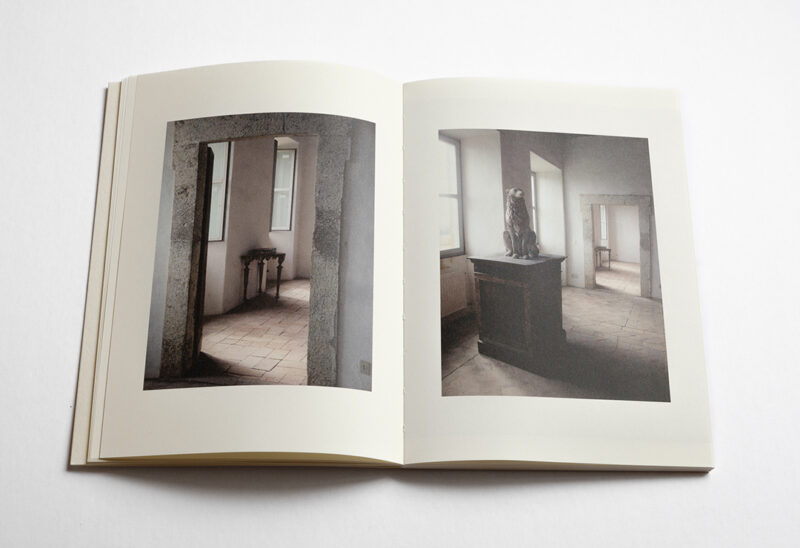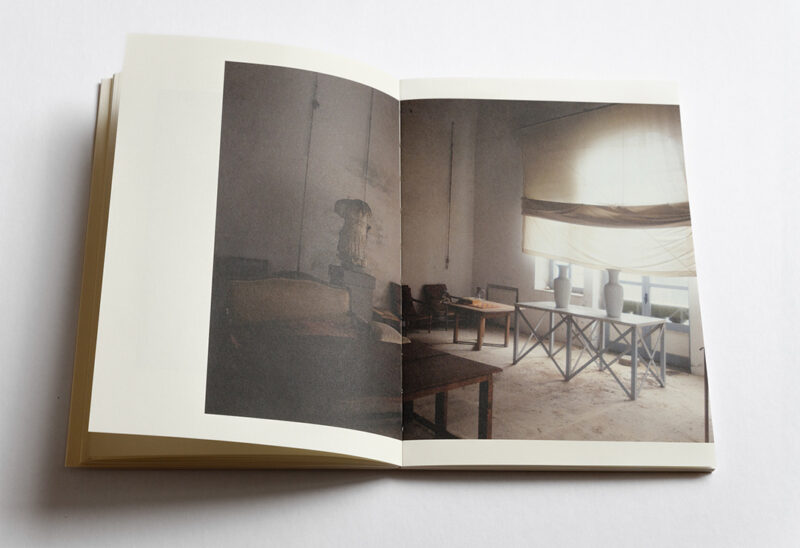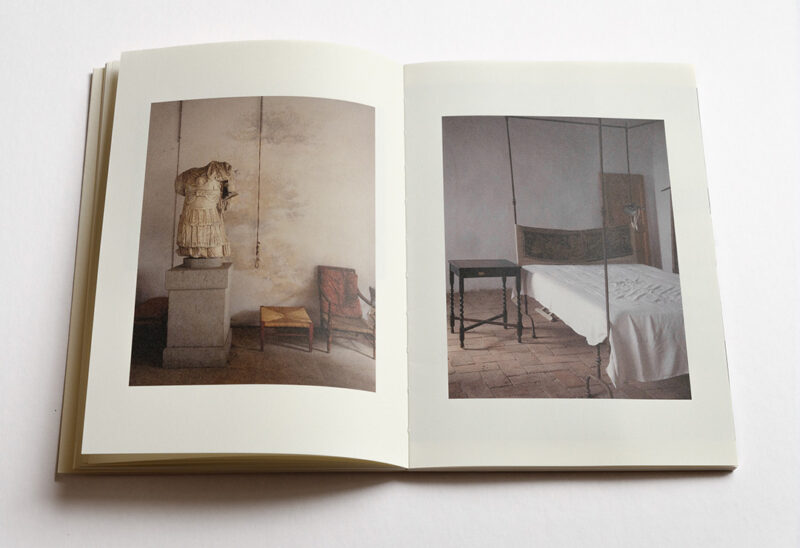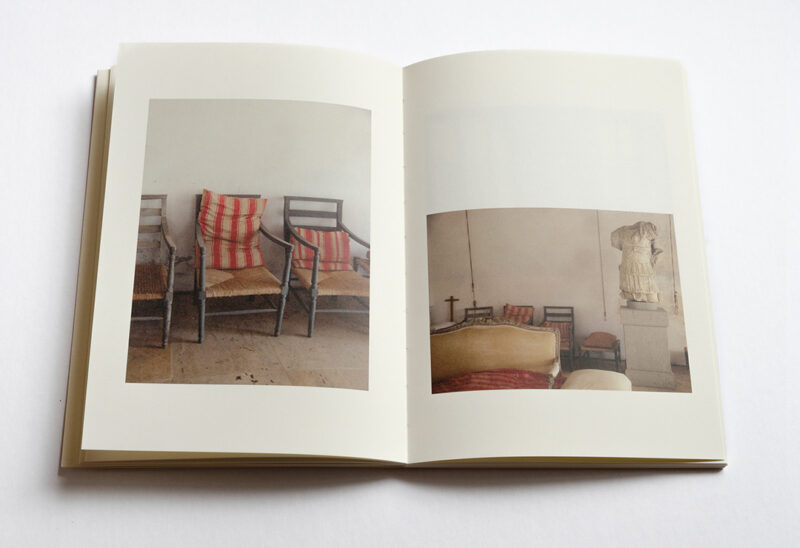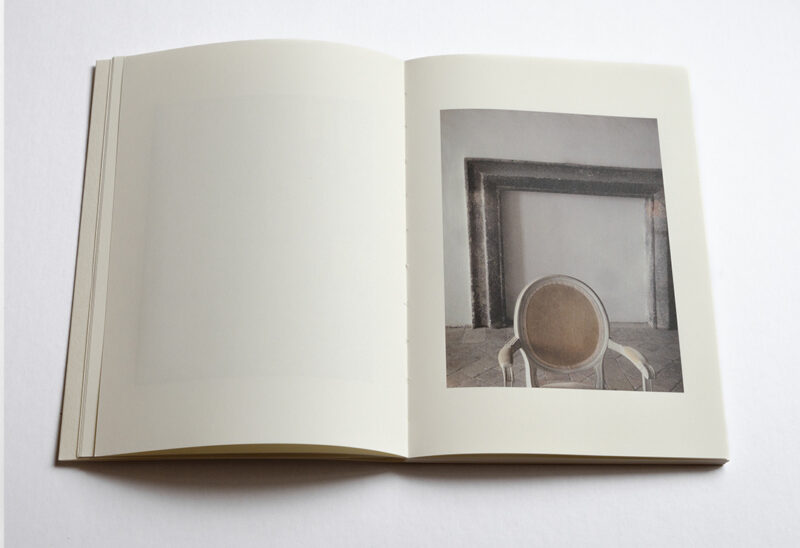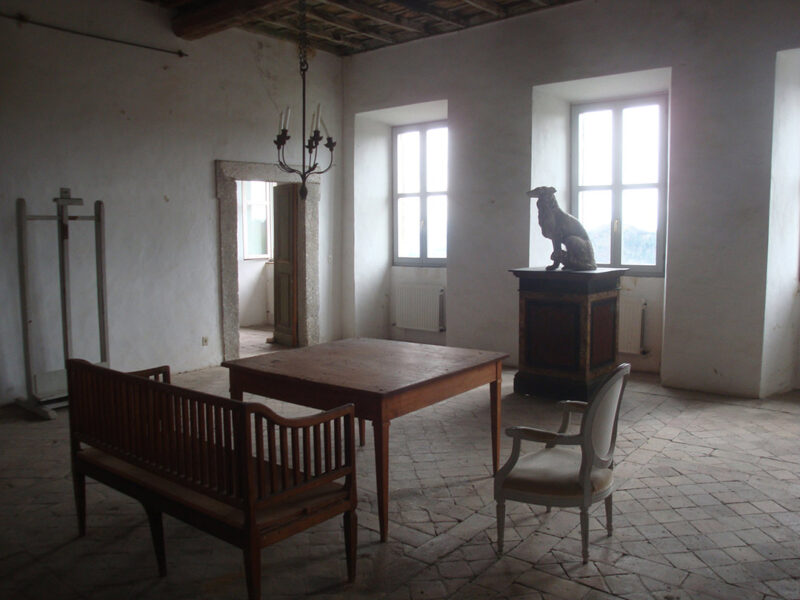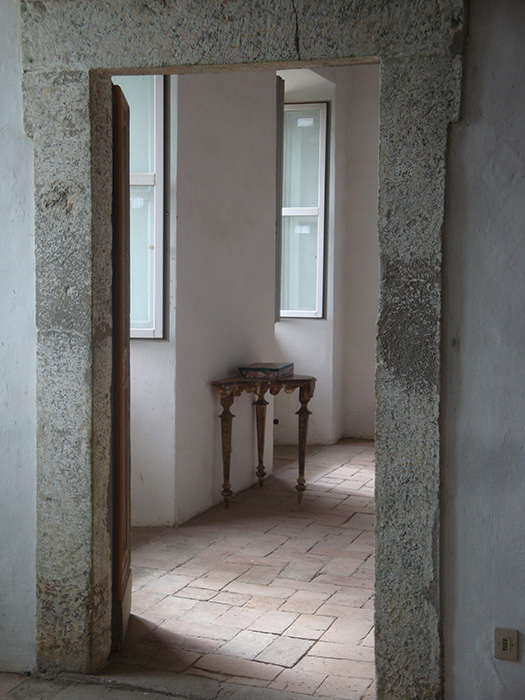[December 5, 2023]
By Louis Perreault
We can almost hear the murmur of the countryside filtering in through half-open windows. We imagine this soundtrack crescendoing by a few decibels within these walls, a gentle reverberation mixed with the sound of Alessandro Twombly’s footsteps as he guides the artist Ewa Monika Zebrowski through the house of his late father, the celebrated painter, sculptor, and photographer Cy Twombly. Through the window, the nearby hills awaiting the spring reawakening offer themselves to Zebrowski’s emotional gaze, as they offered themselves to the artist who, for almost fifty years, found material there to feed his imagination and creative spirit.
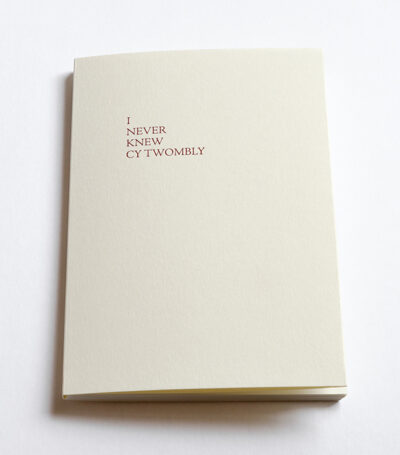
Ewa Monika Zebrowski, I NEVER KNEW CY TWOMBLY, Bassano in Teverina., Prievidza, Nearest Truth Editions, 2023, 82 pages, softcover with inside cover fold, Swiss bound, 21 x 15 cm
I NEVER KNEW CY TWOMBLY, Bassano in Teverina. is a delicate book. Its chalk-white cover, on which the title is printed in serif characters, is made of a cardboard carefully chosen by Zebrowski, who is a past master in the creation of valuable artist books with limited print runs that are tucked into the medium’s most prestigious collections. This recent title is Zebrowski’s first incursion into the trade publishing market, and it’s evident that she has transposed into it her affection for the book as object and her talent for elegantly laying photographs and poetry out on the page.
We pick up this book with a certain reverence, inspecting its exposed binding and fine paper, slowly reading the short poems and lingering on the choice of font, going so far as to consider the systematic use of italics as Zebrowski’s humble bow to Twombly’s immense impact on her work. Our fingers brush the back of the book and we reread the title: I NEVER KNEW CY TWOMBLY. The impression that persists, however, after reading it is that Zebrowski has visited a familiar companion. From her images of this house emanates a sense of closeness with the spaces portrayed and the artist who inhabited them.
The sequence of images opens and closes on the same photograph, a view of the slopes of Bassano in Teverina – a small Italian town that was home to one of Twombly’s studios. When we peruse the entire book to understand the sequential strategy, a panoramic landscape spreads before our eyes. We enter the book-space as she enters the place-space. We exit it with her.
This dividing up of images or subjects also structures how we read the book, as we tend to go back and forth, recognizing here a detail that we noticed elsewhere and looking again, from a different angle, at a room we’ve seen before. These visual echoes reveal Zebrowski’s own path through the space; although, no doubt, she constructed her series without regard for chronology, the book nevertheless takes us on a visual journey marked by advances and pauses, physical turnings in the space, approaches to and distancings from furnishings, windows, rooms, and other architectural features.
We can imagine Zebrowski moving through these spaces, photographing the bed that is still made or the cushion casually placed on the armchair, and becoming emotional about the undeniable presence that is paradoxically felt in the absence and void. The author Dean Rader, who has written the book’s afterword, expresses this elegantly when he says that, despite their obvious emptiness, the images give him a feeling of “an aesthetic fullness.”
Zebrowski took these photographs during a single visit to Twombly’s house in March 2015, four years after he died. It was a spontaneous project, the dazzling creative experience of which was enriched as time allowed the images and ideas to ripen. The charm of I NEVER KNEW CY TWOMBLY resides in its simplicity, revealing a mature and subtle form of photographic writing. We recognize Zebrowski’s style and, although the series is offered as an impressionistic exploration of the site, here she abandons the effects that have often brought her images in line with a sort of contemporary pictorialism. A few blurry images and oblique framings testify to an agile photographic gesture, but overall her observations seem deferent, concerned with a sense of modesty in capturing the essence of these spaces. The balance is true, the rhythm imposes a meditative reading, and the depth of the work is discovered when we revisit the book.
I NEVER KNEW CY TWOMBLY is the result of a collaboration between Zebrowski and Nearest Truth Editions, a new distribution platform that claims to be based on “transparency and cooperation.” Initiated by the prolific artist and critic Brad Feuerhelm, the platform is added to the already full program of Nearest Truth, a larger entity that includes a podcast with more than three hundred episodes and an extensive studio program during which participants create a photobook. As these collaborations take place over the long term, the accent is placed on the creative process and learning about the publishing business. Whereas the predominant model in this area requires artists to make the bulk of the investment, without substantive access to profits from sales, the Nearest Truth Editions model offers them the best of self-publishing while providing them with structural support and a serious community committed to the promotion of photobooks. Translated by Käthe Roth
Louis Perreault lives and works in Montreal. His practice is deployed within his personal photographic projects and in publishing projects to which he contributes through Éditions du Renard, which he founded in 2012. He teaches photography at Cégep André-Laurendeau and is a regular contributor to Ciel variable, for which he reviews recently published photobooks.

